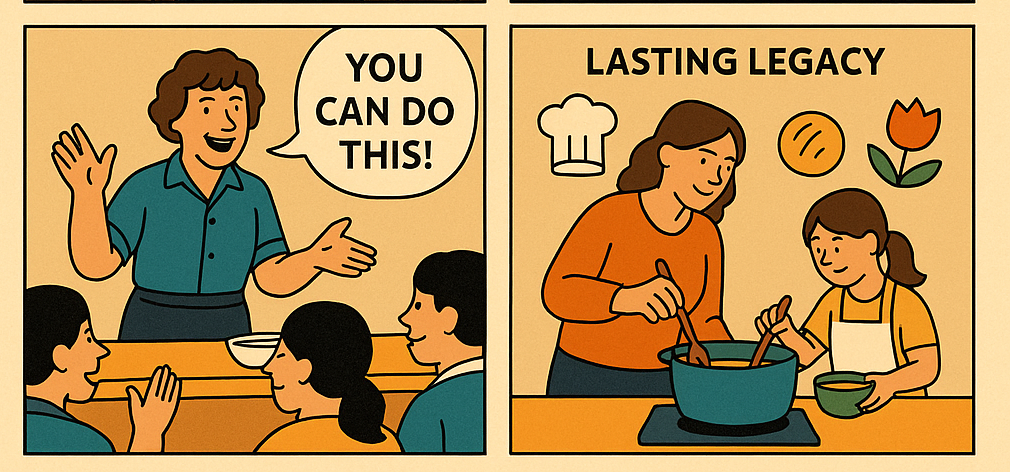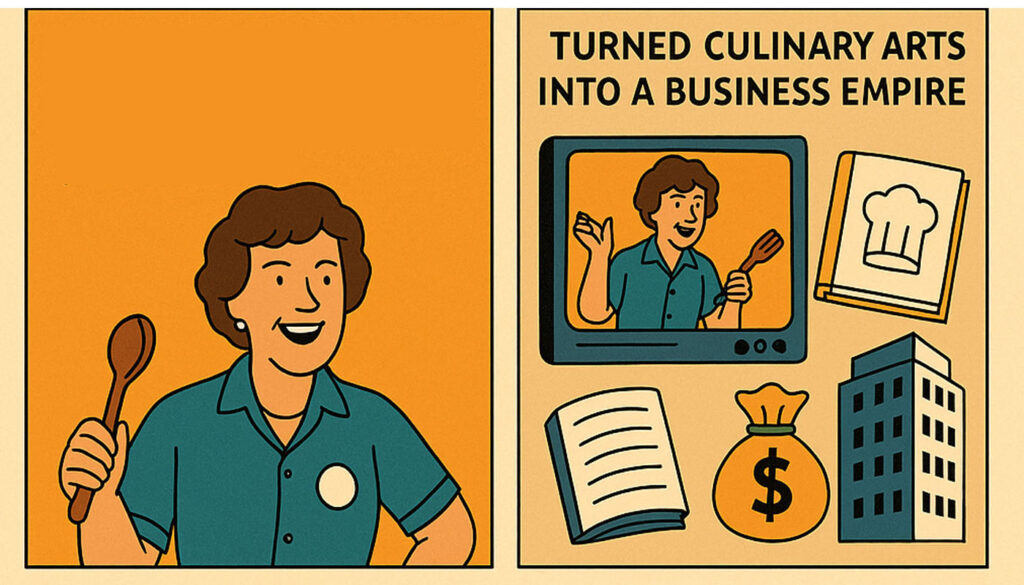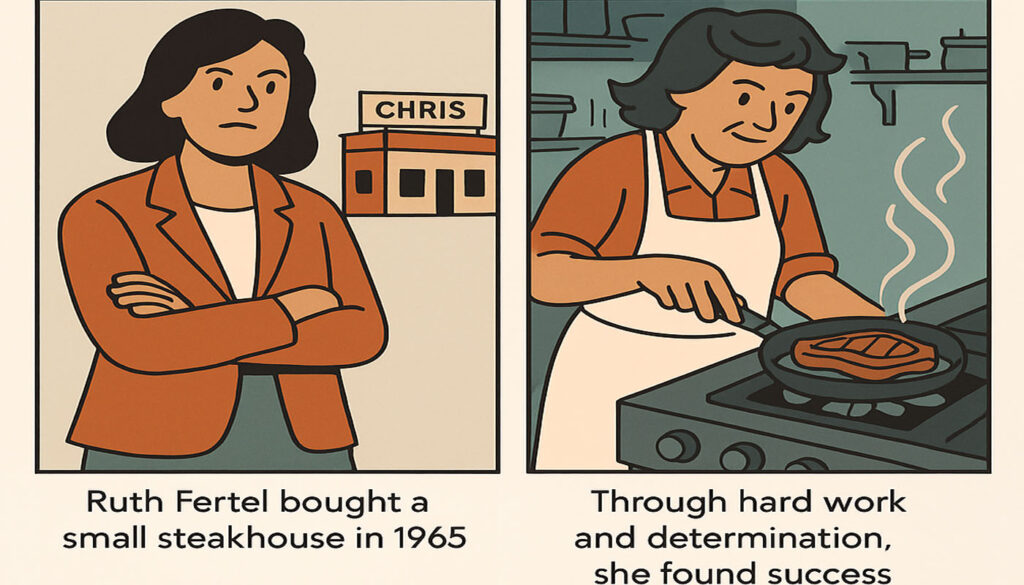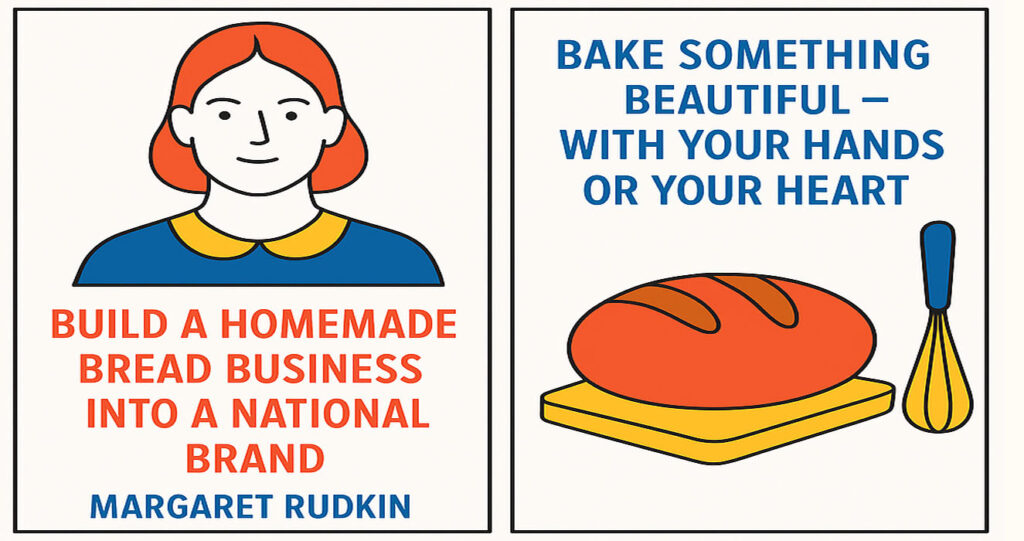Julia Child: The Woman Who Cooked Up a Revolution
There was a time in American kitchens when dinner meant canned beans, frozen peas, and meatloaf baked in silence. Cooking was practical, dull, and rushed. But then came Julia Child — tall, bold, and full of laughter — with a voice as unmistakable as her legacy. She didn’t just bring French cuisine into American homes; she turned cooking into a form of joyful self-expression and transformed culinary arts into a powerful business movement.
Julia Child was not born into a world of food. In fact, she didn’t even learn to cook until her late thirties. Born in 1912 in Pasadena, California, she grew up in a household where food was simple and servants did the cooking. She was more interested in playing sports and writing than in stirring sauces. After college, she worked in advertising and even helped during World War II as part of the Office of Strategic Services (the forerunner to the CIA). But her culinary awakening didn’t begin until she moved to France in 1948 with her husband, Paul Child.
France changed her forever.
It wasn’t just the cheese, or the bread, or the scent of garlic drifting from busy cafés — it was how food was celebrated, respected, and turned into art. One bite of sole meunière (a simple butter-fried fish) in a small French restaurant lit a fire in Julia’s soul that would never burn out. She enrolled in the famous cooking school Le Cordon Bleu. She was the only woman in a class full of men, and much taller than all of them. But she didn’t care. She chopped, stirred, whisked, and studied with the heart of a warrior.
She soon found two brilliant French women — Simone Beck and Louisette Bertholle — who became her partners in the mission of bringing French cuisine to American kitchens. Together, they created a cookbook unlike anything the American public had ever seen. It took years, drafts, rejections, and endless cooking tests, but in 1961, Mastering the Art of French Cooking was born. It was not just a cookbook. It was a revolution in hardcover.
The book didn’t dumb things down. It respected the reader. It said: “You are smart enough. You can do this.” Julia believed that with the right steps, anyone could make a perfect boeuf bourguignon or soufflé. She made people feel brave. That’s where her power lay — not in being perfect, but in being real, joyful, and encouraging.

Then came the moment that launched her into the hearts of millions: television.
In 1963, Julia stepped in front of the camera with her show The French Chef. There she was — a tall woman with a booming voice and a laugh that filled the room — flipping omelets, tossing pancakes, sometimes dropping things, and always making people smile. She wasn’t polished. She wasn’t scripted. But she was absolutely magnetic. America had never seen a cooking show like that before.
She didn’t just cook food. She told stories. She explained the why behind every technique. She looked directly at the audience and said, “You can do this!” She made mistakes — and she laughed at them. Suddenly, cooking wasn’t scary. It wasn’t a chore. It was a celebration.
And as her popularity grew, so did her business empire.
Her television success created a domino effect. Book sales soared. Her name became a brand — one that stood for quality, elegance, and courage in the kitchen. She hosted multiple shows over decades: Julia Child & Company, Julia Child & More Company, Dinner at Julia’s, and later Cooking with Master Chefs. She wasn’t just teaching recipes — she was building an empire of education.
Her empire didn’t look like other business empires. It wasn’t built on flashy logos or corporate tricks. It was built on trust, charm, and excellence. Julia licensed her name carefully. She published bestselling cookbooks that became classics. She appeared in magazine columns, gave talks, supported culinary schools, and inspired a new generation of chefs. She even helped launch the careers of future culinary stars.
Behind all that success was an unshakable belief: good food matters. Not fancy food, not expensive food, but food prepared with heart and skill.
Julia Child had no children of her own, but she became a mother to millions in the kitchen. She gave people permission to try, to fail, and to laugh along the way. She once famously said, “No one is born a great cook. One learns by doing.” That simple truth became the foundation of her empire.
By the 1980s, Julia was a household name. She had become the face of American culinary exploration. Her kitchen — the one she cooked in for her shows — was eventually preserved by the Smithsonian Museum as a piece of national history. It wasn’t just about her recipes. It was about her spirit — her belief that anyone could become confident in the kitchen with the right tools and a little courage.
Even in her later years, Julia remained curious, passionate, and full of life. She encouraged women to take leadership roles in food industries. She promoted sustainability and respected ingredients. Her voice — part opera, part thunder — continued to boom across America, inspiring laughter, learning, and lunch.
She never called herself a businesswoman. But she absolutely was. She turned her passion into power. She didn’t sell products; she sold belief. Julia showed that teaching, when done with love, could build an empire as mighty as any corporation. She proved that being authentic was more powerful than being perfect.
Her legacy is more than just cookbooks and TV reruns. It’s in every home cook who dares to try a new recipe. It’s in every chef who believes that good food deserves respect. It’s in every child who stands on tiptoes to stir a pot.
Julia Child passed away in 2004, just two days before her 92nd birthday. But she lives on. Not in statues, but in spatulas. Not in monuments, but in meals.
Her business was the kitchen. Her product was joy. And her mission was to teach — not just how to cook, but how to live boldly, try bravely, and eat with love.
Bon appétit, Julia. The world still hears your laughter.

















